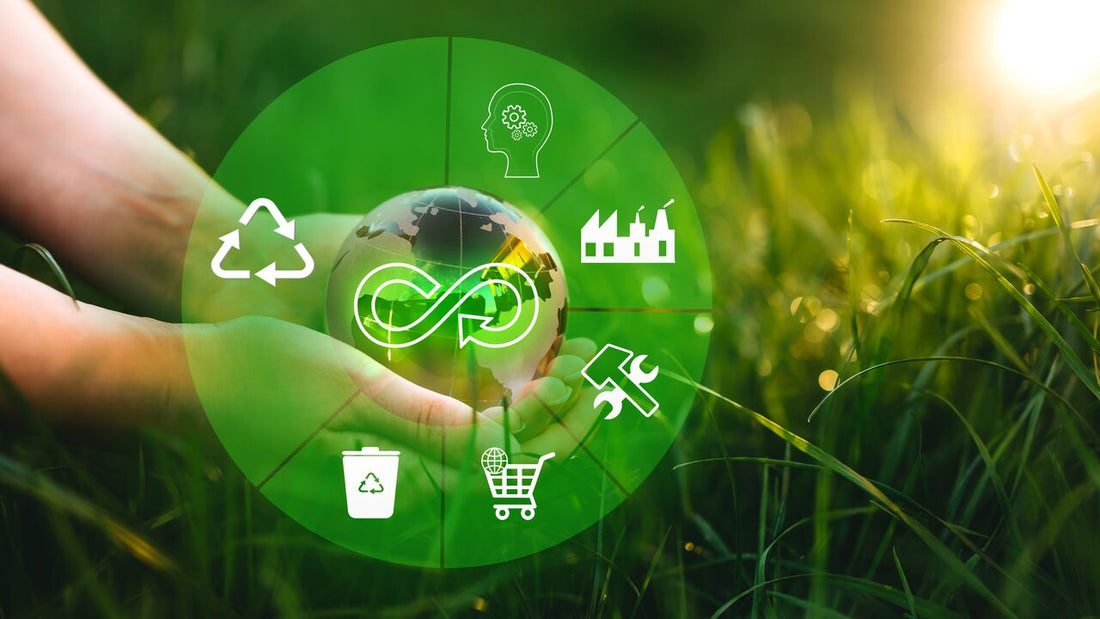
Circular Economy: How Technology is Reducing Waste and Driving Sustainability
Share
As the global population grows and resources become increasingly scarce, the concept of a circular economy has gained prominence as a sustainable alternative to traditional linear production and consumption models. A circular economy focuses on minimizing waste, maximizing resource efficiency, and fostering innovation. Technology plays a pivotal role in accelerating this transition, offering innovative solutions to reduce waste and drive sustainability.
Understanding the Circular Economy
In contrast to the "take-make-dispose" model of traditional economies, the circular economy emphasizes keeping resources in use for as long as possible. This involves:
- Reducing: Minimizing the use of raw materials by optimizing production processes.
- Reusing: Extending the lifespan of products through repair and refurbishment.
- Recycling: Converting waste into new materials or products to prevent resource depletion.
The Role of Technology in the Circular Economy
Technology serves as a critical enabler of the circular economy, driving innovation across industries. Here are some key areas where technology is making a difference:
1. Smart Manufacturing
Advanced manufacturing technologies, such as 3D printing and industrial IoT, are reducing material waste and enabling on-demand production. For instance, 3D printing allows for precise material usage, minimizing excess and improving efficiency.
2. Digital Twins
Digital twin technology creates virtual replicas of physical assets, enabling companies to monitor, analyze, and optimize their operations. This reduces maintenance costs, extends product lifecycles, and minimizes waste.
3. AI-Powered Waste Management
Artificial intelligence (AI) is revolutionizing waste management by optimizing recycling processes and improving material sorting. Smart systems powered by AI can identify and separate recyclable materials with higher accuracy, reducing contamination and increasing recycling rates.
4. Blockchain for Traceability
Blockchain technology ensures transparency and traceability in supply chains, enabling businesses to track resources throughout their lifecycle. This helps verify the authenticity of recycled materials and fosters accountability in sustainable practices.
5. Sharing Economy Platforms
Digital platforms supporting the sharing economy, such as ride-sharing and equipment rental services, promote resource efficiency by maximizing asset utilization. These platforms reduce the need for new products, lowering waste and emissions.
Benefits of the Circular Economy
Adopting a circular economy driven by technology offers numerous advantages:
- Environmental Sustainability: Reducing waste and conserving resources helps mitigate climate change and protect ecosystems.
- Economic Growth: The circular economy fosters innovation, creating new business models and job opportunities.
- Cost Savings: Efficient resource usage and waste reduction lead to significant cost savings for businesses.
- Enhanced Resilience: By relying less on raw materials, companies can better withstand supply chain disruptions.
Challenges and Opportunities
While the circular economy holds great promise, challenges remain:
- High Initial Costs: Implementing advanced technologies and redesigning processes can be expensive.
- Regulatory Hurdles: Policy changes are required to incentivize circular practices and remove barriers.
- Consumer Behavior: Educating consumers about sustainable practices and encouraging adoption is critical.
Despite these challenges, the opportunities for innovation and impact are immense. Collaboration between governments, businesses, and consumers is key to overcoming these hurdles and advancing the circular economy.
The Path Forward
To accelerate the transition to a circular economy, stakeholders must:
- Invest in research and development to create innovative solutions.
- Promote policies that incentivize sustainable practices and support technological adoption.
- Encourage public-private partnerships to foster collaboration and knowledge sharing.
Conclusion
The circular economy represents a powerful vision for a sustainable future, and technology is at the forefront of this transformation. By leveraging smart manufacturing, AI, blockchain, and other innovative tools, we can reduce waste, conserve resources, and create a more resilient and eco-friendly global economy. Together, we can drive sustainability and ensure a better world for generations to come.
